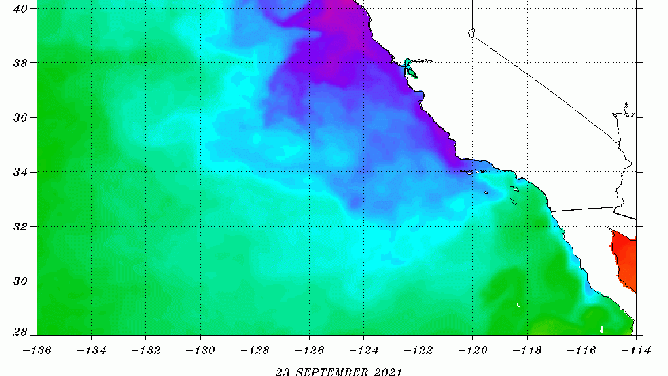Lake Michigan water temps' plummet into 40s detected by infrared satellite
A strong breeze dropping north through the Great Lakes has caused water temperatures along the western Michigan shores to plummet -- enough change to where it's being detected by infrared satellite imagery!
GRAND RAPIDS, Mich. -- A strong breeze dropping north through the Great Lakes has caused water temperatures along the western Michigan shores to plummet -- enough change to where it's being detected by infrared satellite imagery!
Meteorologists could spot the change in water temperature from space Friday morning after skies finally cleared in the region. This particular satellite image is created using a sensor that can measure changes in temperature on the ground and in the clouds.
Buoys reported temperatures along the eastern shores of Lake Michigan in the 40s Friday morning!
Skies are clearing this morning and we're getting our first look on satellite at the frigid water temperatures along the Lake Michigan shoreline. Recent strong northerly winds caused "upwelling" to occur, replacing warmer water on the surface with deeper colder water. #miwx pic.twitter.com/bQCeVQNqhx
— NWS Grand Rapids (@NWSGrandRapids) September 24, 2021
But it wasn't a cold wind that chilled the lake -- water temperature in large bodies of water takes days to weeks to react to large temperature swings. Instead, it was the result of the strong wind pushing water south and away from the shorelines.
When that happens, cooler, deeper water is brought to the surface to replace the warmer "missing" surface water blown south -- a process known as "upwelling." Deeper water has a lower temperature since it has had less exposure to the sun and warmth of the surface.
Upwelling can occur anywhere large-scale winds will push surface water away. It's a regular occurrence along the Pacific Coast, especially in late spring and early summer when a persistent ridge of high pressure just offshore will bring northerly winds near the coastline, pushing surface water away and bringing colder water to the surface.

Locals up and down the Pacific coastline will call this the May or June Gloom as the warmer days of late spring mix with the chilly ocean waters to create large areas of fog that are then blown inland along the coast.